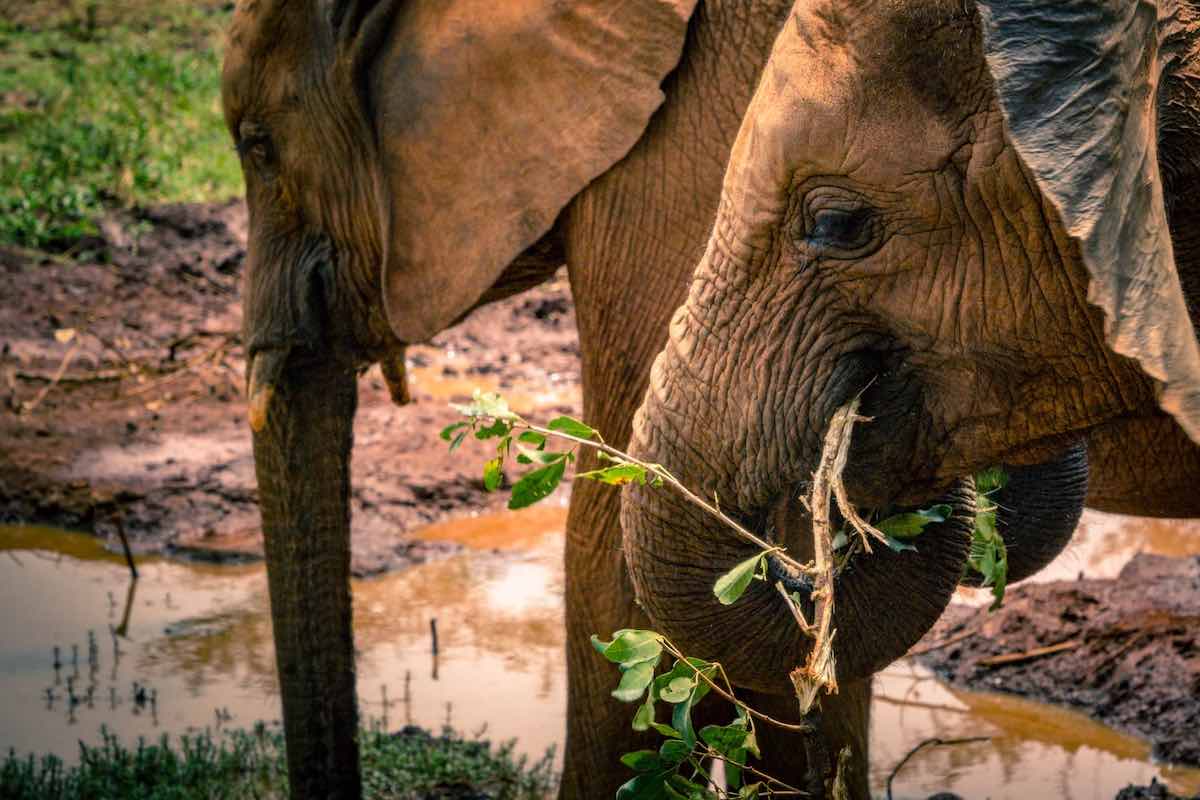Kenya has been regarded as one of the finest destinations for a safari in all of Africa for a long. It offers wonderful people and culture, gorgeous vistas, easy accessibility, and abundant biodiversity among its animal residents.
Even though certain areas may get congested during peak season, we’ve hand-picked some of the finest regions and camps to see elephants in Kenya while keeping you off the well-traveled route.
1. Samburu National Park/Samburu Reserve
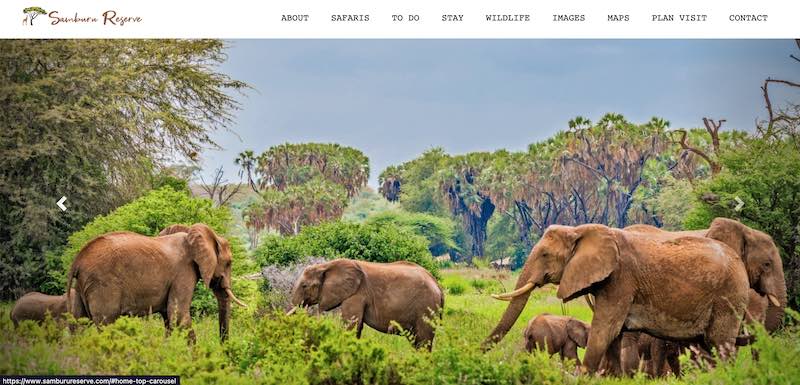
Samburu National Reserve is located in the North Eastern Province. The park covers an area of 1,236 km² and was founded in 1974. The park is named after the Samburu people, who are indigenous to the area.
Quick facts:
| Number of Elephants: | 900 (60-70 families) |
| Location: | https://goo.gl/maps/KAxbngkbNNWAn1Gj6 |
| Homepage: | https://www.samburureserve.com |
Elephants can be found in large breeding herds in Samburu National Park, and a good number of them have become accustomed to the presence of vehicles there.
It is one of the largest African safari available today. Because of the elephants being used to visitors and cars, you have a once-in-a-lifetime opportunity to interact with these awe-inspiring creatures that usually gather in huge breeding herds here.
The park is home to a variety of wildlife, including elephants, lions, leopards, cheetahs, Thomson’s gazelles, Grant’s gazelles, zebras and impalas. The park is also home to a number of bird species, including vultures, secretary birds, crowned cranes and ostriches.
If you’re looking for an amazing elephant safari experience, Samburu National Park should be at the top of your list.
With its large herds and easy-to-find elephants, it’s a great place to see these majestic creatures in their natural habitat.
It is strongly advised that you make Elephant Watch Camp your base while in Samburu National Reserve. You don’t even have to get out of bed to observe elephants gathering fallen fruit as they stroll through the camp after it rains.
Location:
Video:
2. Lewa Wildlife Conservancy

Lewa Wildlife Conservancy is one of the best elephant sanctuaries in northern Kenya. The Conservancy is a not-for-profit organization that strives to protect and conserve wildlife, especially endangered elephants.
Quick facts:
| Number of Elephants: | 400 |
| Location: | https://goo.gl/maps/4k8QKXy7nd1L1bCA7 |
| Homepage: | https://www.lewa.org |
To do this, they provide sanctuary and protection to elephants and other animals, as well as work on various conservation projects. The Conservancy is located in the Laikipia district of Kenya and covers an area of over 60,000 acres.
It is home to a variety of different wildlife, including elephants (baby elephants as well), lions, rhinos, and leopards. The Conservancy also offers a wide range of tourist activities, such as game drives, bush walks, and cultural tours.
One of the highlights of a visit to Lewa Wildlife Conservancy is the chance to see elephants up close in their natural habitat. The Conservancy is committed to ensuring that these majestic creatures are protected for future generations, making it a truly worthwhile experience.
Location:
Video:
3. Masai Mara
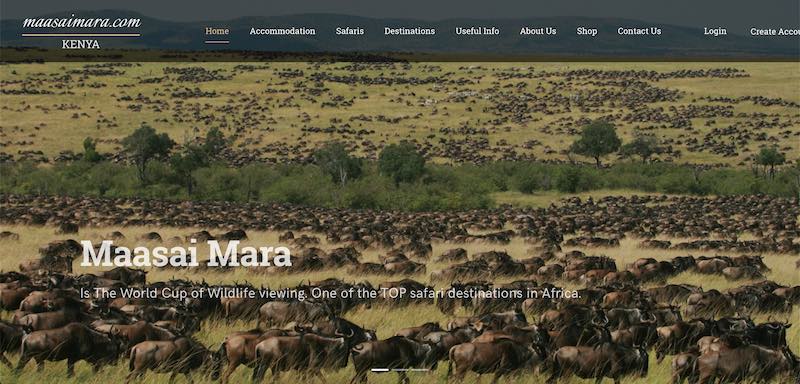
The Masai Mara is a great place to see elephants in Kenya. The Masai Mara reserve offers a variety of landscapes for visitors to explore, from wide open plains to dense forests.
This diversity provides a habitat for a large number of wildlife species, including elephants. In addition, the Mara is home to several lodges and safari companies that offer Elephant Safari experiences.
Quick facts:
| Number of Elephants: | 2,500 |
| Location: | https://goo.gl/maps/HpJsrspq7j4wPY1m6 |
| Homepage: | https://www.masaimara.com |
The Mara reserve is located in the southwest of Kenya and covers an area of 1,510 km2. It was established in 1961 and is named after the Masai people, who are indigenous to the area. The reserve is home to a large number of wildlife species, including lions, leopards, cheetahs, hyenas, buffalos, zebras, and giraffes.
If you’re looking for an African safari that offers the chance to see elephants in their natural habitat, the Masai Mara is a great option. With its large herds and variety of landscapes, it’s a top choice for anyone interested in seeing these magnificent creatures.
Location:
Video:
4. The David Sheldrick Wildlife Trust
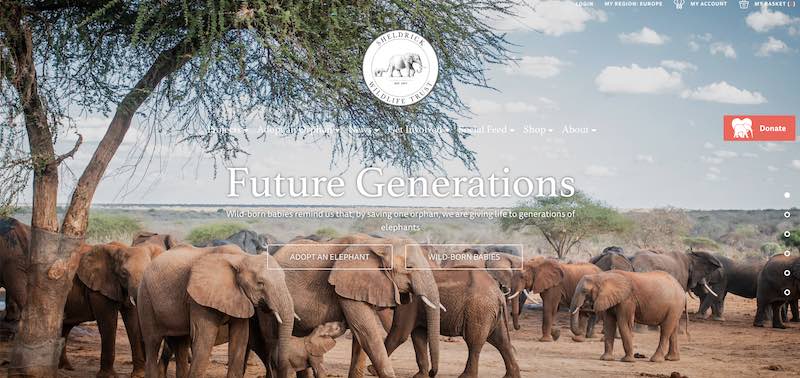
The David Sheldrick Wildlife Trust (DSWT) is one of the best places to see elephants in Kenya.
The David Sheldrick Wildlife Trust was founded in memory of Dr. Daphne Sheldrick’s late husband, David Sheldrick, a renowned naturalist and wildlife artist who dedicated his life to the protection of Kenya’s animals. The Trust is a not-for-profit organization that provides sanctuary and protection for elephants and other wildlife in Kenya.
Quick facts:
| Number of Elephants: | 100 |
| Location: | https://goo.gl/maps/TL1NF8QLm1tgPZsD6 |
| Homepage: | https://www.sheldrickwildlifetrust.org |
The DSWT has several locations in Kenya, including the Nairobi National Park, Tsavo East National Park, and Amboseli National Park. The Trust also operates an elephant orphanage in Nairobi, where orphaned elephants are cared for and eventually released back into the wild.
The DSWT offers a variety of elephant-focused experiences, such as elephant safaris, educational programs, and adoptions. If you’re looking for a way to support elephant conservation in Kenya, the DSWT is a great option.
According to the Global Big 5 Elephant Action Plan, it is visited by over 1 million tourists every year, DSWT is Kenya’s number one site for seeing elephants according to many. Visitors may get a closer look at the elephants and learn about the efforts to protect them. DSWT also provides educational programs and finances research into elephant health and ecology.
Furthermore, it plays an important role in wildlife conservation, especially that of elephants.As a result, not only is DSWT one of Kenya’s greatest sites for viewing elephants, but it is also an essential center for elephant conservation.
Location:
Video:
5. Chyulu Hills
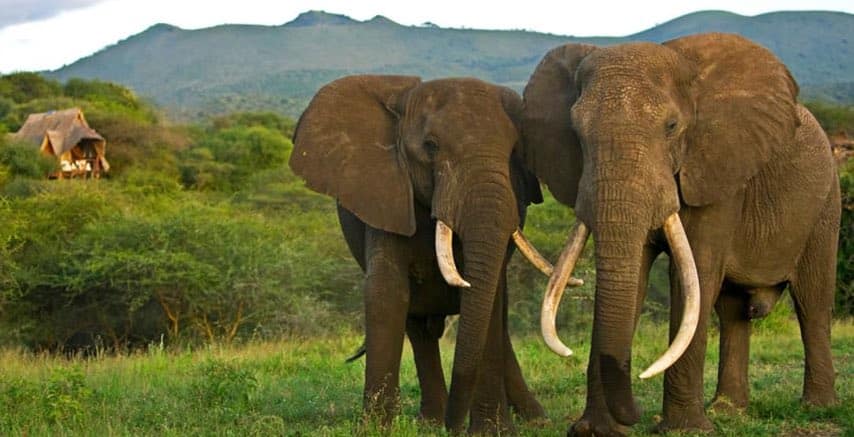
Kenya is teeming with wildlife, and one of the best places to see elephants is in the Chyulu Hills. Located near Amboseli National Park, the Chyulu Hills is home to a large elephant population.
Quick facts:
| Number of Elephants: | 14,000 |
| Location: | https://goo.gl/maps/W6Wapu12sZGG5uAA9 |
| Homepage: | N/A |
Because of the dense and lush vegetation, elephants are often hidden from view, but with a little patience, you’re sure to see them.
In addition to bull elephants, the Chyulu Hills is also home to a variety of other wildlife, including lions, leopards, and hyenas. With its abundance of wildlife and spectacular scenery, the Chyulu Hills is a great option for anyone interested in seeing elephants in Kenya.
Location:
Video:
6. Amboseli National Park
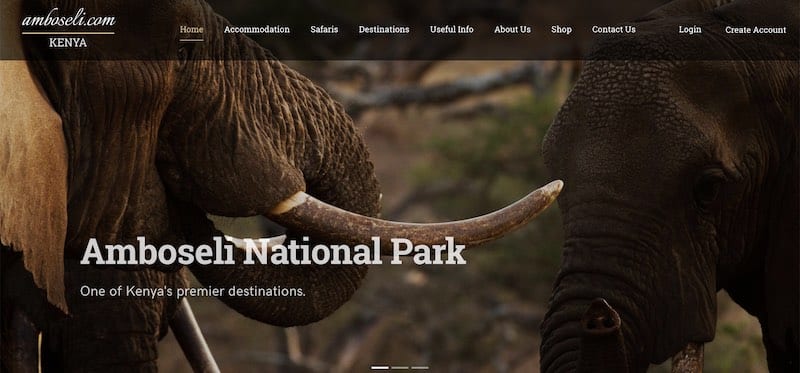
Amboseli National Park is located just north of Mount Kilimanjaro, and it is known for its large elephant population. With over 1,000 elephants roaming the park, Amboseli is one of the best places to see these majestic creatures.
Quick facts:
| Number of Elephants: | 1,600 |
| Location: | https://goo.gl/maps/z16JqB2pTaHi129XA |
| Homepage: | https://amboseli.com |
The park also offers stunning views of Mount Kilimanjaro and a variety of other wildlife, including lions, leopards, cheetahs, and giraffes. In addition, Amboseli is home to the Amboseli Elephant Research Project, which has been studying the park’s elephants since 1972.
Visitors can stay in one of the park’s many lodges or campsites, and several safari companies offer tours of the park. Amboseli National Park is a great place to see elephants and other wildlife in their natural habitat.
Location:
Video:
7. Tsavo National Park
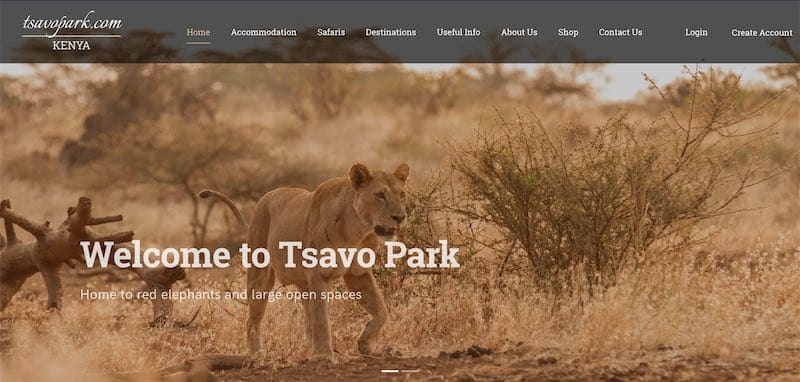
Tsavo West National Park is a place in Kenya to see elephants in their natural habitat. It is considered one of the favorite safari destinations in Kenya. Covering an area of over 4,000 square miles, Tsavo is home to a large population of elephants, as well as other plains game such as lions, leopards, and buffalo.
Quick facts:
| Number of Elephants: | 10,000 (10% of Africas Big Tuskers live here!) |
| Location: | https://goo.gl/maps/pLTyPmnH4mXJqib86 |
| Homepage: | https://www.tsavopark.com |
In addition to its large elephants, Tsavo is also known for its red dust and red-colored elephants. The red color is caused by the high concentration of iron in the soil.
The park also has a wide variety of birds, making it a haven for birdwatchers. Visitors to Tsavo can take part in game drives, walking safaris, and night drives, all of which offer the opportunity to see elephants up close.
With its vast size and abundance of wildlife, Tsavo National Park is a truly remarkable place and a must-see for any visitor to Kenya.
Location:
Video:
Conclusion
If you’re looking to see some elephants while in Kenya, any of these seven locations would be a great place to start. Each offers its own unique experience, and all are sure to provide some incredible memories.
While there are certainly other parks and reserves that offer excellent elephant sightings, we think these seven spots should provide ample opportunity for visitors to get up close and personal with these amazing animals.
FAQs – Frequently Asked Questions
Yes, you can see elephants in the wild in Kenya. The country is home to several large elephant populations, and several parks and reserves offer excellent opportunities for wildlife viewing, including Amboseli National Park, Tsavo East National Park, and the Masai Mara.
There are several animal sanctuaries and rehabilitation centers in Kenya that offer visitors the opportunity to interact with elephants. Elephants from southern and east Africa are rehabbed here. Some of these include the David Sheldrick Wildlife Trust, the Giraffe Centre, and the Nairobi Animal Orphanage.
Yes, elephants in Kenya are generally healthy. However, the country’s elephant population is under threat from the ivory trade, and there have been some reports of elephants being poisoned for their tusks.
